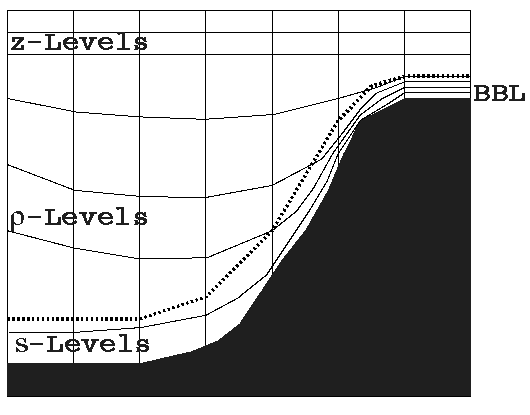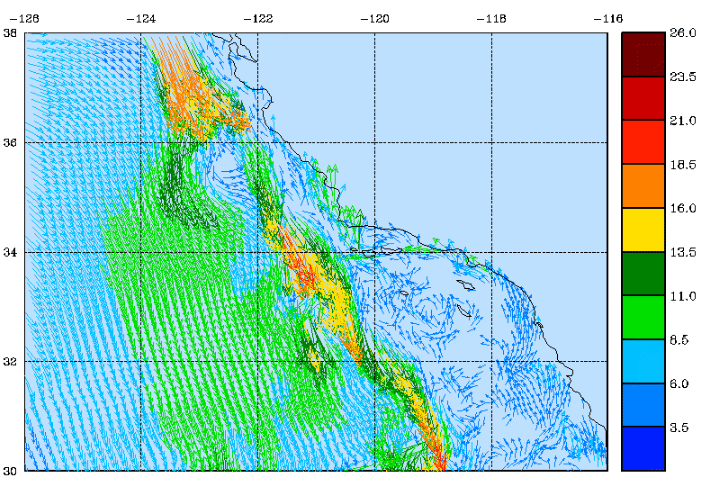
Model Development
Abstract:
Numerical ocean models have become multi-disciplinary research
tools used in a variety of ocean-related areas, including coupled
physical-biogeochemical studies, climate simulations, and
coastal ocean predictions. Working with Dale Haidvogel
at Rutgers, Dr. Song proposed the S-coordinate system
(Song and Haidvogel 1994) for better resolving surface
and bottom layers of ocean models and developed the
S-Coordinate Rutgers University Model (SCRUM),
which has become a widely used community model with subsequent contributions
from other developers ( http://marine.rutgers.edu/po/models).
He further improved the model by introducing the Jacobin
scheme to calculate the pressure gradient terms accurately over sleep
topography in coastal regions (Song 1998; Song and Wright 1998).
Recently, Dr. Song developed an adaptive vertical coordinate
system for Navy's operational applications as well as
for community research. The newly developed ocean
model (Figure 1), and its predecessors SCRUM/ROMS,
has been successfully applied to many coastal regions.
One of the applications at JPL is the Southern
California Bight model (Figure 2) for studying coastal
air-sea interaction using QuikSCAT winds (joint with
Tim Liu and Wendy Tang). The model, forced by the
QuikSCAT winds, successfully simulated the meandering California Current
(southward), cyclonic circulations with the Bight,
and the Davison near-shore Current (northward).
This study demonstrated that spacebased observations could be used
to advance coastal ocean studies.

Figure 1:
Schematic of the newly developed adaptive vertical coordinate
system for community ocean models with multiple application
capabilities.

Figure 2:
Ocean model results for the Southern California coastal ocean
(3 km resolution): velocity field at σt=26.6 km/m3 shows the meandering
southward California Current, the nearshore northward Davison Current,
and the cyclonic circulation within the Bight.
Reference:
Song, Y. T., and D. Haidvogel, 1994: A semi-implicit
primitive equation ocean circulation model using a generalized
topography-following coordinate system. J. Comput. Phys., 115, 228-244.
Song, Y. T., 1998: A general pressure gradient formulation
for ocean models. Part I: Scheme design and diagnostic analysis,
Monthly Weather Review, 126, 3213-3230.
Song, Y. T., and D. Wright, 1998: A general pressure gradient
formulation for ocean models. Part II: Energy,
momentum, and bottom torque consistency, Monthly Weather Review,
126, 3231-3247.
|




